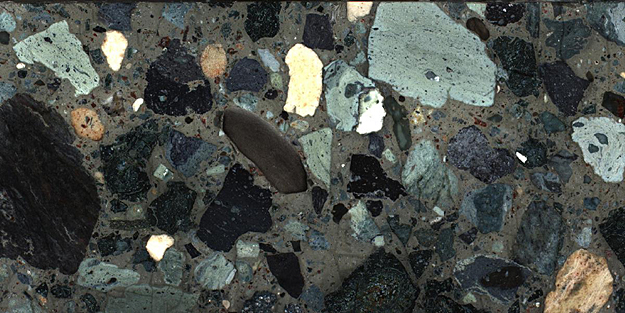Astrobiology Web September 9, 2019
 A portion of the drilled cores from the rocks that filled the crater left by the asteroid impact that
A portion of the drilled cores from the rocks that filled the crater left by the asteroid impact that
wiped out the dinosaurs. Scientists found melted and broken rocks such as sandstone, limestone
and granite -- but no sulfur-bearing minerals, despite the area's high concentration of sulfur
containing rocks. This finding suggests that the impact vaporized these rocks forming sulfate
aerosols in the atmosphere, causing cooling on the global scale
CREDIT International Ocean Discovery ProgramWhen the asteroid that wiped out the dinosaurs slammed into the planet, the impact set wildfires, triggered tsunamis and blasted so much sulfur into the atmosphere that it blocked the sun, which caused the global cooling that ultimately doomed the dinos.
That's the scenario scientists have hypothesized. Now, a new study led by The University of Texas at Austin has confirmed it by finding hard evidence in the hundreds of feet of rocks that filled the impact crater within the first 24 hours after impact.
The evidence includes bits of charcoal, jumbles of rock brought in by the tsunami's backflow and conspicuously absent sulfur. They are all part of a rock record that offers the most detailed look yet into the aftermath of the catastrophe that ended the Age of Dinosaurs, said Sean Gulick, a research professor at the University of Texas Institute for Geophysics (UTIG) at the Jackson School of Geosciences.
"It's an expanded record of events that we were able to recover from within ground zero," said Gulick, who led the study and co-led the 2016 International Ocean Discovery Program scientific drilling mission that retrieved the rocks from the impact site offshore of the Yucatan Peninsula. "It tells us about impact processes from an eyewitness location."
The research was published in the Proceedings of the National Academy of Sciences on Sept. 9 and builds on earlier work co-led and led by the Jackson School that described how the crater formed and how life quickly recovered at the impact site. An international team of more than two dozen scientists contributed to this study.
More:
http://astrobiology.com/2019/09/rocks-at-asteroid-impact-site-record-first-day-of-dinosaur-extinction.html